Settings
The type of setting you choose for your diamonds and gemstones play a big part in the overall aesthetic and feel of the jewellery.
A classic 4 claw (or prong) setting for a solitaire diamond versus a flush setting in a wide band will make the same stone look totally different. Understanding the differences in setting styles will help you refine and define what exactly it is you want your bespoke piece of jewellery to look like.
Claw Set
This is one of the most well know setting styles but within a ‘claw’ setting there is variation!
Round Claw – the most common of the claws and one you’ll most easily recognise. This classic design has a soft, rounded end to the claw.
Talon Claw – becoming increasingly popular, the pointed prong gives a sleek, modern look adding some drama to the design.
Tab Claw – less widespread, but with the right design, this squared off prong can be very distinctive.
Double Claw – exactly as it sounds, this version doubles the claws at each point.
V or Corner Claw –used on the delicate exposed ends of stones like the princess, pear or marquise shapes to protect them, this prong encases the tip of the gem.

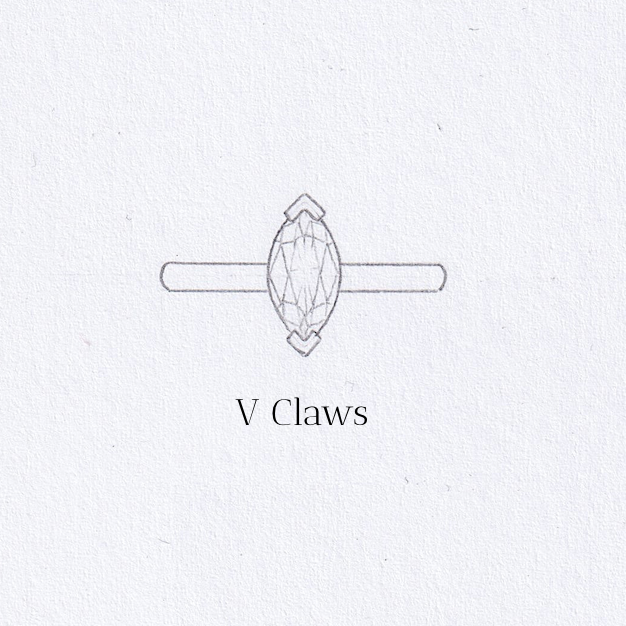
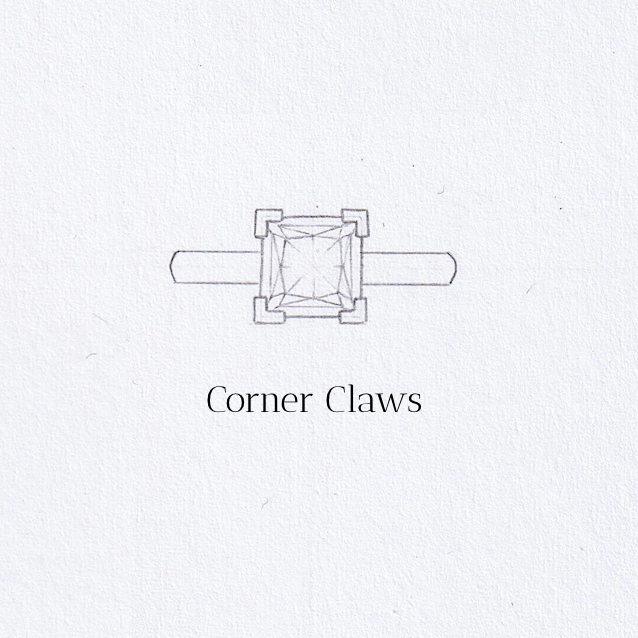
Other Setting Styles
Below, we take you through some of the other well known setting styles. Some of these you may well recognise, but perhaps you didn't know the right terminology and others, you may never have seen before. By understanding what you like, it will help you to articulate exactly what it is you're wanting whether that be a bespoke piece, a remodel or a ready-to-wear piece.
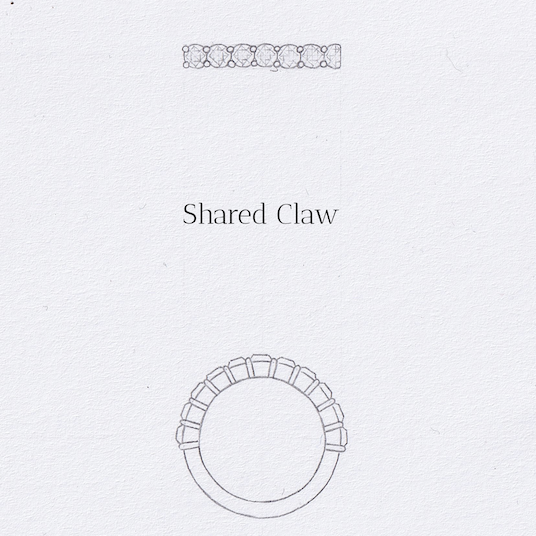
Shared Claw
A shared claw ring setting refers to a type of setting where multiple gemstones are held in place by the same prongs, creating a visually seamless and elegant appearance. This type of setting allows more light to enter the gemstones, enhancing their brilliance and making them appear larger and is suitable for larger stones.. It is a popular choice for engagement rings and other jewellery pieces.
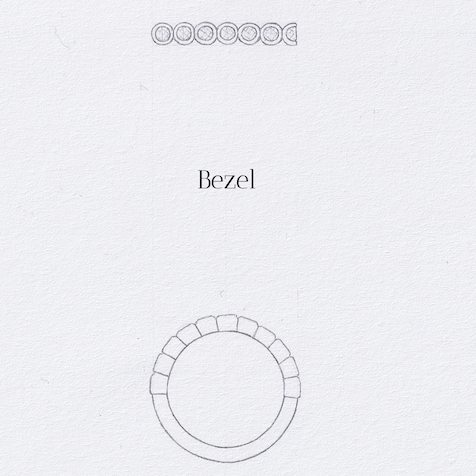
Bezel
With bezel setting, a thin piece of metal is folded over the edge of a gemstone to secure it in place. This type of setting provides a secure and protective setting for the gemstone and is commonly used for cabochon stones and softer gemstones. Bezel settings can give a streamlined and modern look to jewellery pieces and can also be more durable than other types of settings.
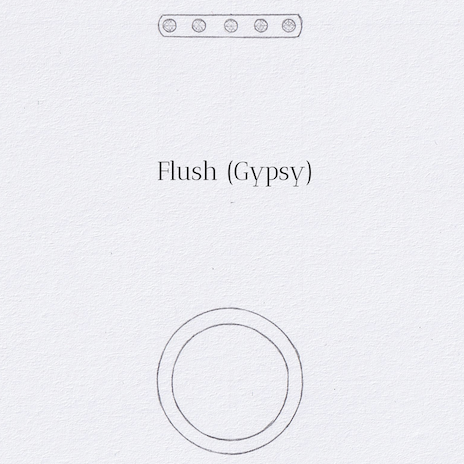
Flush (Gypsy)
Flush setting, also known as gypsy setting, is a technique where a stone is set into a drilled hole in metal so that it sits flush with the surface. This setting style provides a modern and sleek look, as the stone appears to be part of the metal itself. It’s a secure setting method that works well for small stones or diamonds.
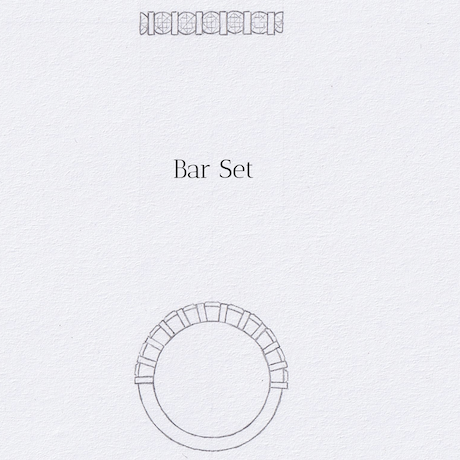
Bar Set
A bar setting refers to a style where a metal bar secures the stones in place within a piece of jewellery, such as a ring or bracelet. This setting allows more of the stone to be visible and can create a contemporary and minimalist look. It is commonly used in diamond and gemstone jewellery to showcase the brilliance and beauty of the stones.

Pave
Pave setting is a technique where small gemstones are set closely together with minimal metal showing, creating a surface that appears to be paved with gems. This type of setting requires great precision and craftsmanship to achieve a glamorous and elegant look, making it a popular choice for adding sparkle and brilliance to rings, earrings, bracelets, and necklaces.
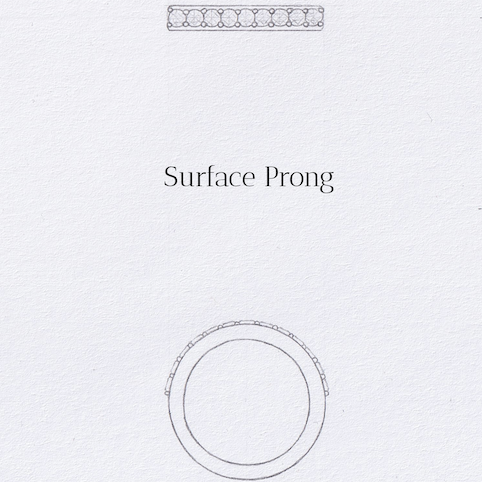
Surface Prong
In a similar vein to the shared prong setting, but with two rails of metal either side of the stones, this setting holds the gemstones securely with small prongs. The prongs are raised slightly above the surface of the metal.
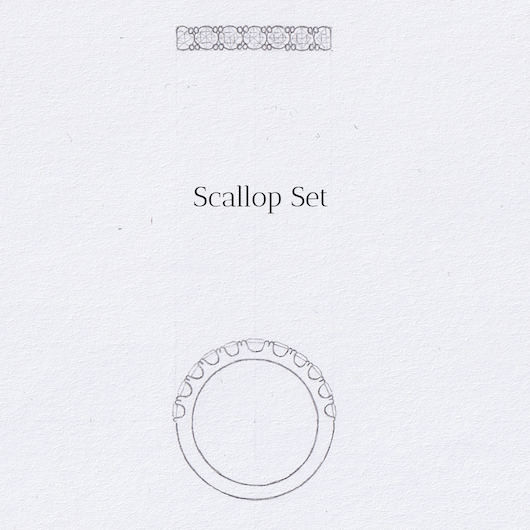
Scallop
A popular choice for wedding and eternity rings, the scallop setting is where the shared prongs are created from the shank and from the side create a scallop shape.

Channel
Often seen in wedding bands, this classic setting style is where the stones are set between two walls of metal without any claws.
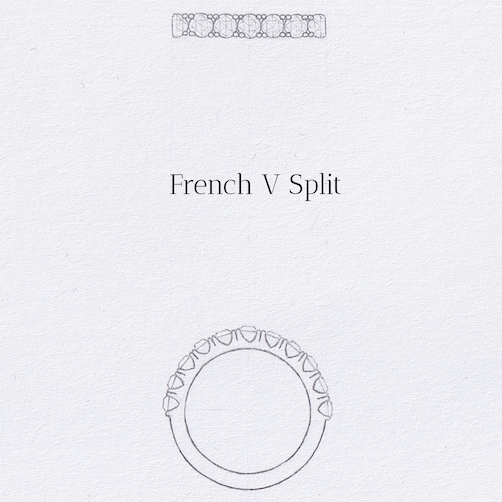
French V
Similar to the scallop setting, this delicate setting style is made with carefully split prongs that form a scalloped-shape when viewed from the side
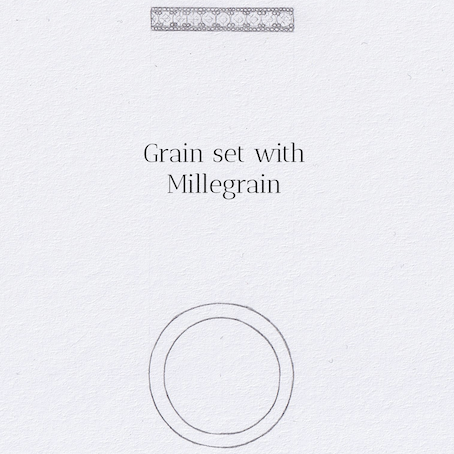
Grain Set with Millegrain
In this intricate setting, gems are secured with the help of tiny prongs or beads, they ensure there are no noticeable gaps between the stones and are barely visible. The millegrain edge has an association with antique jewellery, this setting is mostly for decoration and a tiny row of beads are placed on the edge of the setting.
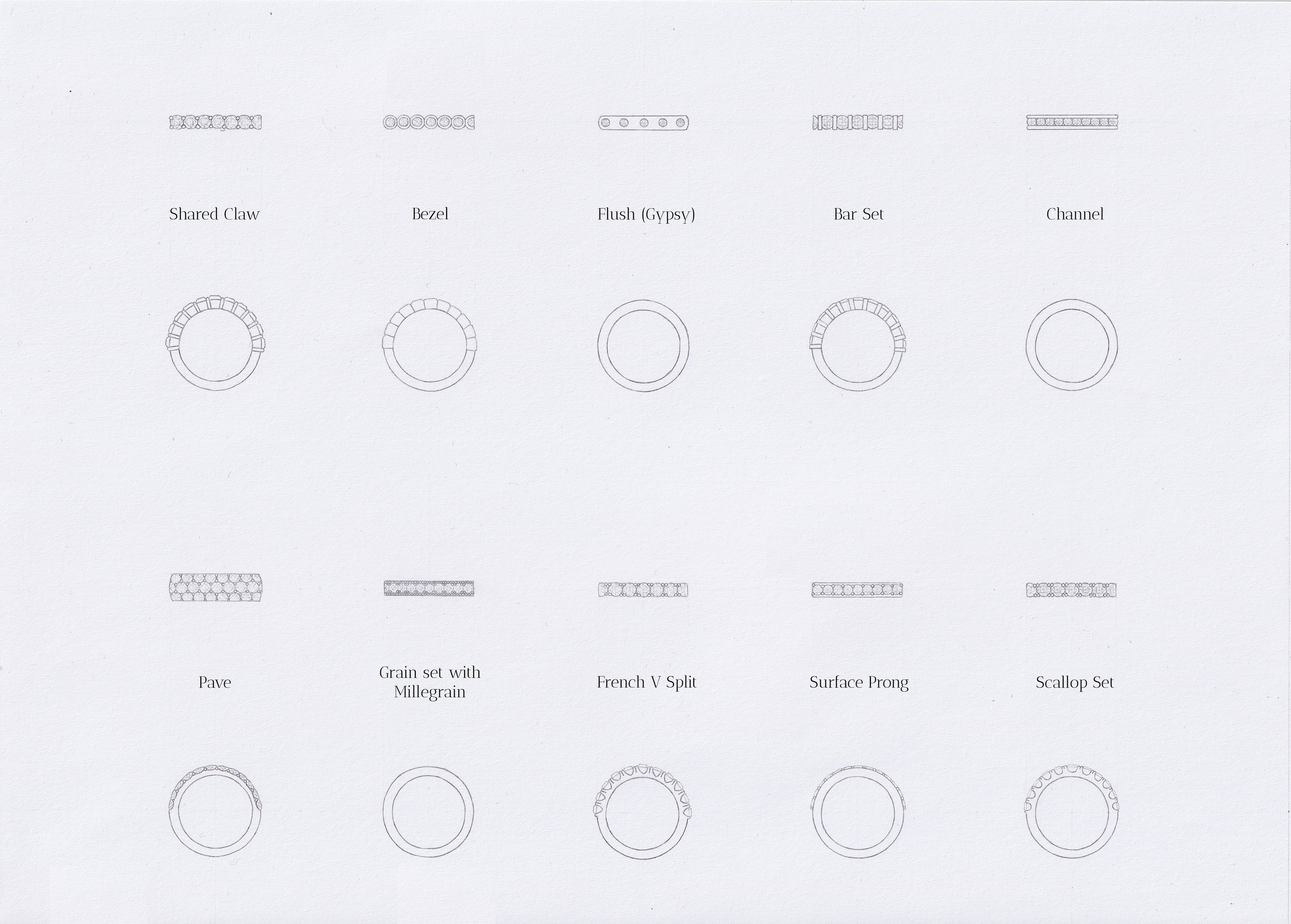
Different Setting Styles